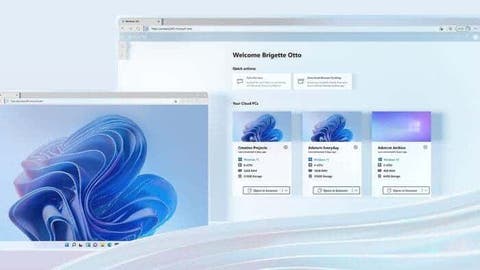Microsoft is looking to move its Windows operating system fully to the cloud for consumers. As it has been doing for commercial customers with Windows 365. The brands’s internal presentation from June 2022, which was revealed as part of the ongoing FTC v. Microsoft hearing, discusses building on Windows 365. To enable a full Windows operating system streamed from the cloud to any device. This move is identified as a long-term opportunity in Microsoft’s “Modern Life” consumer space. Including using the power of the cloud and client to enable improved AI-powered services. And full roaming of users’ digital experience.
Microsoft’s Cloud-Based Strategy: Moving Windows to the Cloud
Windows 365 is a service that streams a full version of Windows to devices. And Microsoft has already been integrating it deeply into Windows 11. A future update will include Windows 365 Boot and Windows 365 Switch. It will enable Windows 11 devices to log directly into a Cloud PC instance at boot instead of the local version of Windows and integrate Cloud PCs into the Task View feature, respectively.
Microsoft also mentions the need to invest in custom silicon partnerships to shore up Windows commercial value and respond to the threat of Chromebooks. The company has been doing some of this already for its ARM-powered Surface Pro X devices. And may even be designing its own ARM-based chips for servers and Surface devices. There are also rumors that Microsoft could be working on its own AI chips.
As part of its broader AI push for Windows, Microsoft recently announced Windows Copilot. It’s an AI-powered assistant for Windows 11 that can summarize content, rewrite it, or explain it. Microsoft is also working with AMD and Intel to enable more Windows features on next gen CPUs. And there have been hints at Windows 12. All of this is part of Microsoft’s ambition to enable improved AI-powered services in Windows.
